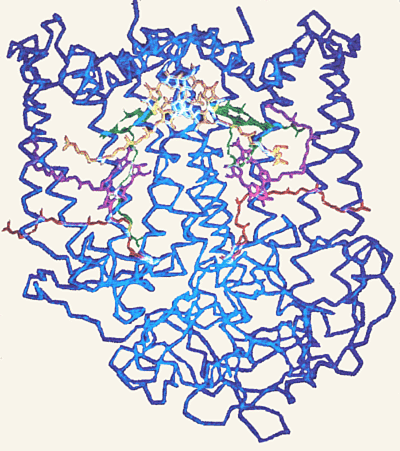Electron transfer in the photosynthetic reaction center
One of the most well-known and intensively studied biological systems where the electron transfer plays the key role is the photosynthetic reaction center. Apart from fundamental aspects, the study of the photoreaction center can be a help in solving an urgent up-to-date problem of the effective transformation of energy. At present there are no artificial systems comparable in efficiency with the work of the photoreaction center. Suffice it to say that the main supplier of energy on the globe is photosystems of the vegetation cover of the planet which produce four times more energy than thermal, hydroelectric and atomic power stations together. With regard to the problems of ecology, the actuality of the study of the mechanisms of photosynthesis becomes evident.
We have developed an approach to the description of the processes of charge separation in the photoreaction center ( Fig.1 ). The approach is based on the modeling of the electron transfer from the primary electron donor (the bacteriochlorophyll dimmer) to the acceptor (bacteriopheophytin) with the use of the system of self-consistent quantum-mechanical equations. The systems of dynamical differential equations for the electron transfer rate found by numerical integration are in agreement with the experiment. It is shown that the electron transfer has oscillation character and leads to oscillations of the absorption bands of the bacteriochlorophyll dimmer. The results obtained explain experiments on the study of oscillation effects in the primary processes of charge separation in the photoreaction center.

Fig.1.
The work on the subject has been supported by the RFBR (project №01-07-90317).